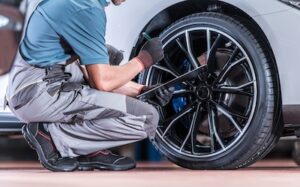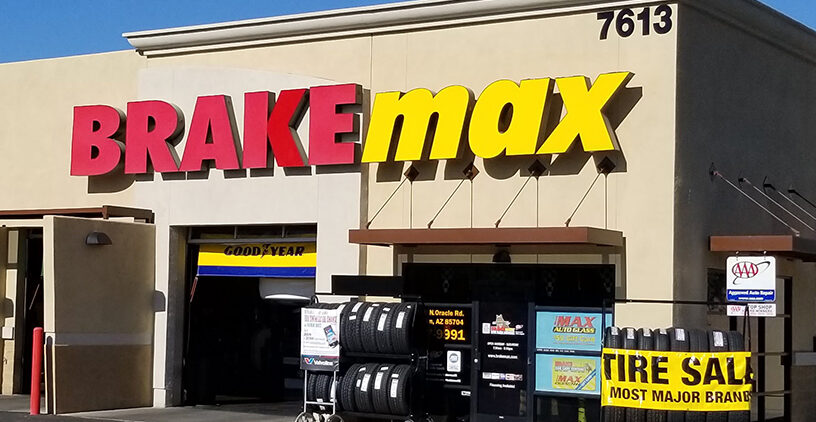Tire Maintenance & Safety: Know Your Tires
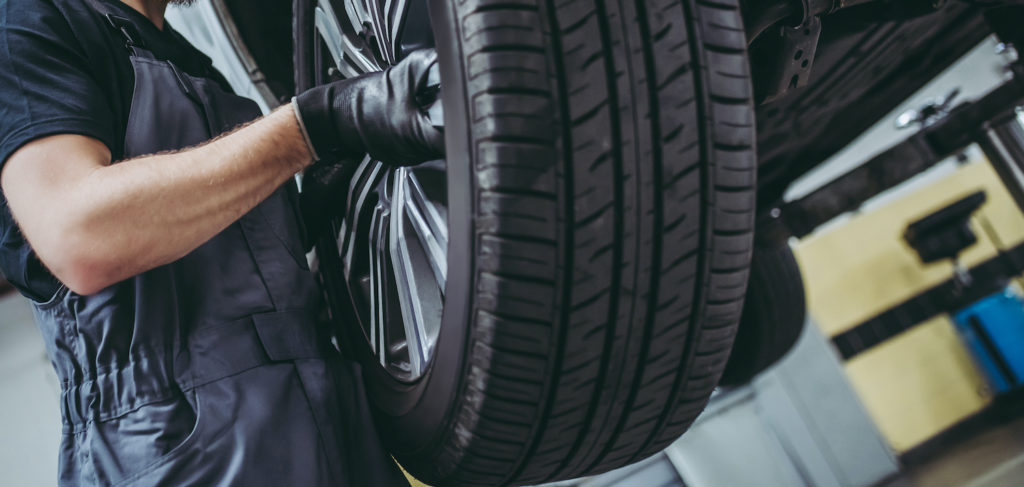
The condition of your tires is critical to your safety on the road. Worn tires can lead to dangerous blowouts at highway speeds, cause you to lose traction in severe weather conditions, and be more prone to damage from debris, all of which could leave you stranded.
You can keep your tires safe with a few simple maintenance steps, and save yourself from having to pay for expensive repairs or replacement later. Here's information on how to care for your tires, why certain maintenance tasks are important to the life and safety of your tires, and what to look for if you suspect they need replacing.
How to Make Your Tires Last Longer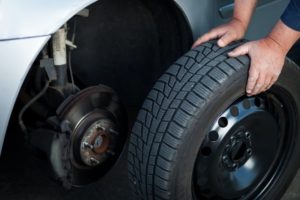
One of the easiest and most important things you can do to get the most life from your tires is to ensure they are properly inflated to the correct tire pressure. Tires that are over-inflated or under-inflated have a tendency to wear faster and unevenly, resulting in needing new tires sooner than you may expect. The recommended tire pressure is between 32 and 35 PSI, but you can check the sticker on the driver's side door for the recommended pressure for your particular model or check your owner's manual. Check your tire pressure regularly and before you head out on a long trip. It's best to check your tire pressure when your tires are cold, and be sure to use a high-quality tire pressure gauge to get an accurate reading.
Making sure your wheels are kept in alignment and your tires are balanced also make a difference in tire life, since both can lead to excessive wear. We recommend having your tires balanced and rotated and your wheels aligned at regular intervals.
If you can, park your car in a garage or out of direct sun. Our hot Tucson summers can make tires degrade more quickly.
Why Tires Need to be Regularly Rotated
What is tire rotation and why does it need to be done on a regular basis? Tire rotation is simply moving the tires from their current positions to new ones. Generally, tires on the front and back are swapped. If your car has a full-sized spare, such as a Jeep, the rotation will include the spare.
Tires are rotated to prevent uneven wear. This is so that the tires all wear evenly. It is a good idea to have your tires rotated every 6,000 to 8,000 miles or whenever you come in for an oil and filter change. Book an appointment with the tire experts at your nearest BRAKEmax location. We can inspect your tires and recommend any other tire services you may need.
The Benefits of Tire Balancing
Normal tread wear caused by daily driving can change how weight is distributed around the wheel and tire assembly. You may notice your steering wheel or floorboard vibrates or feel vibrations in the driver's seat when your tires are out of balance.
Keeping your tires balanced provides a number of advantages, including:
- Making your ride more comfortable
- Reducing uneven tread wear
- Increasing your tires' durability and safety
- Improving your fuel consumption
Our mechanics can quickly rotate your tires, which involves removing the wheels and tires, and putting the wheels on specialized equipment. We'll correct any imbalances, then remount the tires and wheels.
The Importance of Tire Alignment
Properly aligned tires are less susceptible to the excessive wear that can lead to compromised safety on the road. Some of the signs that it's time to have your tires aligned include: 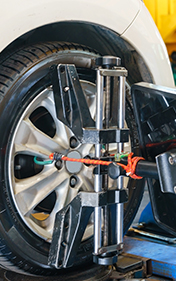
- Your steering wheel doesn't easily return to its normal position after you've turned
- Your steering wheel remains at an angle when you're driving on a straight road
- The car pulls to one side on a straight road
- Your handling or steering feels different than it normally does
You may notice one or more of these signs after you've suddenly hit a curb or pothole, driven too quickly over a high speed bump, or after you've been in an accident.
All vehicles should drive in a smooth, straight line. If yours doesn't, it may be time to schedule a tire alignment.
What to Know About Wheel Alignment
Feeling your vehicle pull to one side or the other is not the only sign that you may need a wheel alignment. In fact, you may not experience that pulling at all and still need wheel alignment service. Other signs of misalignment include:
- Excessive tire wear
- A steering wheel that's crooked
- Poor handling when you corner or brake
When you bring your vehicle to BRAKEmax, our mechanics check three main angles of your wheels:
- Camber—The inward or outward angle of the tire when it's viewed from the front. When this angle exceeds the manufacturer's specifications, one edge of the tire may wear more quickly and the car may sometimes pull to one side.
- Caster—This is the angle toward the rear or front when viewed from the side. Tire wear isn't usually the result, but a pull to one side is a definite sign.
- Toe—This is the inward or outward direction of the tires when viewed from above. Hitting a curb or pothole will often cause this angle to exceed specifications.
Without proper alignment, you may prematurely wear out your tires or have one tire wear at a faster rate than others. Excessive tread wear can compromise your safety by reducing your tires' ability to grip the road. If you've noticed any of the signs listed above, make an appointment today at BRAKEmax for a complete tire and wheel inspection.
Inspect Your Tires Regularly
One of the simplest and most important things you can do to keep your tires in good condition is to inspect them at regular intervals. Checking your tires can help prevent small issues from becoming expensive or dangerous problems. To increase the life of your tires and get better performance, look for:
- Signs of damage: Look closely for cracks, splits, small punctures, or bulges. Pay particular attention to the sidewalls.
- Objects in your tread: It's normal for tread to pick up debris from the road, but some debris, such as pieces of metal or glass, can cause a puncture. Remove anything that's caught in the tread.
- Tread wear: Look for exposed steel if you have radial tires, and check for wear (on all types of tires) that appears to be worse on one edge, which indicates uneven wear. It's easy to check the depth of your tread yourself: Simply take a penny and insert it into the read with Lincoln's head going in first. If you can see the top of Lincoln's head, it means that your tread has become too shallow and the tire should be replaced.
Schedule Your Appointment Today
The experts at BRAKEmax Tire & Service Centers have everything you need to keep your tires safe and in top condition. Our complete tire services include tire rotation, tire repair, wheel balance, and more. We'll thoroughly inspect your tires and provide a free, no-obligation quote for our services. Make sure to check our coupons page for special savings on our services and on brand-new tires for your car or truck.
Contact us online to schedule your tire service appointment.
Tire Maintenance & Safety FAQ
How long should four new tires last?
A well-maintained set of tires should last about three to five years, which equates to about 45,000-75,000 miles. We emphasize “well-maintained” because some drivers seldom care for their tires and are shocked when they need to be replaced after just 15,000 miles. The truth is that tires are designed to last for many thousands of miles; however, without proper care, your tires' lives can be significantly shortened. Failing to maintain your tires is a costly oversight that can lead to early tire replacement.
We recommend performing the following to enjoy optimal life and performance from your tires:
- Routine tire rotations. Things like weight distribution, drivetrain setup, and even vehicle dynamics can affect how tires wear differently between the front and rear axles. Routine tire rotations performed every 7,500 miles can help promote even tire wear.
- Regular tire pressure checks. Over- or under-inflated tires can lead to tire damage. We recommend checking your tire pressure regularly to prevent damage to your tires.
- Routine tire balancing. Tire balancing services guarantee your tires have even weight distribution. Tire balancing ensures that your tires always make even contact with the road and that tiny imperfections are properly countered to ensure your tires' smooth operation. We recommend tire balancing services every 7,500 miles — performed alongside your tire rotation.
- Regular wheel alignment services. Wheel alignment services ensure that your wheels point perfectly straight. If one of your wheels is even slightly off-center, it can cause premature and uneven tire wear — requiring replacement.
Do I need an alignment after replacing the tires?
While it may seem drastic to perform a wheel alignment service after replacing your tires, conducting this routine service is an excellent way to maximize your tires' life spans from the time they are installed. Sometimes, wheel alignment is a forgotten service that drivers only pursue if they notice drastic changes in their vehicle, such as extreme pulling to one side or uneven tire wear.
A wheel alignment makes tiny adjustments to the camber and toe of each wheel to ensure that all four wheels are aligned perfectly. When a four-wheel alignment service is performed, our tire shop will drive your vehicle onto a machine that accurately measures the camber and toe of each wheel. Once measured, our experts will perform micro adjustments to each wheel to ensure that they point perfectly straight.
If just one of your wheels is even a single degree off-center, it can negatively impact your vehicle’s performance, and cause premature tire wear on the new tires you just purchased. This is why we recommend performing a wheel alignment after replacing your tires. Even after new tires have been installed, we recommend continuing with regular wheel alignment services once every one to two years. Routine alignment services help promote even tire wear while optimizing fuel economy by minimizing your vehicle’s rolling resistance.
What happens if you drive with worn-out tires?
Driving with worn-out tires is a significant safety concern. Each time you visit our Tucson tire shop, one of the first things we do is measure the tread depth of your tires. Having adequate tread depth is vital to maintaining a surefooted grip on the road in dry conditions and inclement weather. Some of the dangers of driving with worn-out tires include:
- Sudden blowout
- Collision
- Loss of control
- Skidding/sliding
Driving with worn-out tires is almost like a ticking time bomb because there is no way to know when a worn-out tire will blow out. A tire blowout, or sudden loss of pressure, can be extremely dangerous, especially at high speeds, and cause you to lose control of your vehicle.
To avoid danger and ensure optimal tire safety, we recommend replacing your tires before their tread wears down to 2/32 of an inch. While we welcome you to come into our tire shop in Tucson for a quick tire tread measurement, there is a quicker and more convenient way to tell if your tires are worn past their recommended minimum tread depth; it's called “the penny test.”
The penny test involves taking a regular penny and placing it in the groove of your tires. If you can see the top of Lincoln's head, your tires have worn below the minimum tread depth, and we recommend visiting our tire shop at your earliest convenience for tire replacement.


